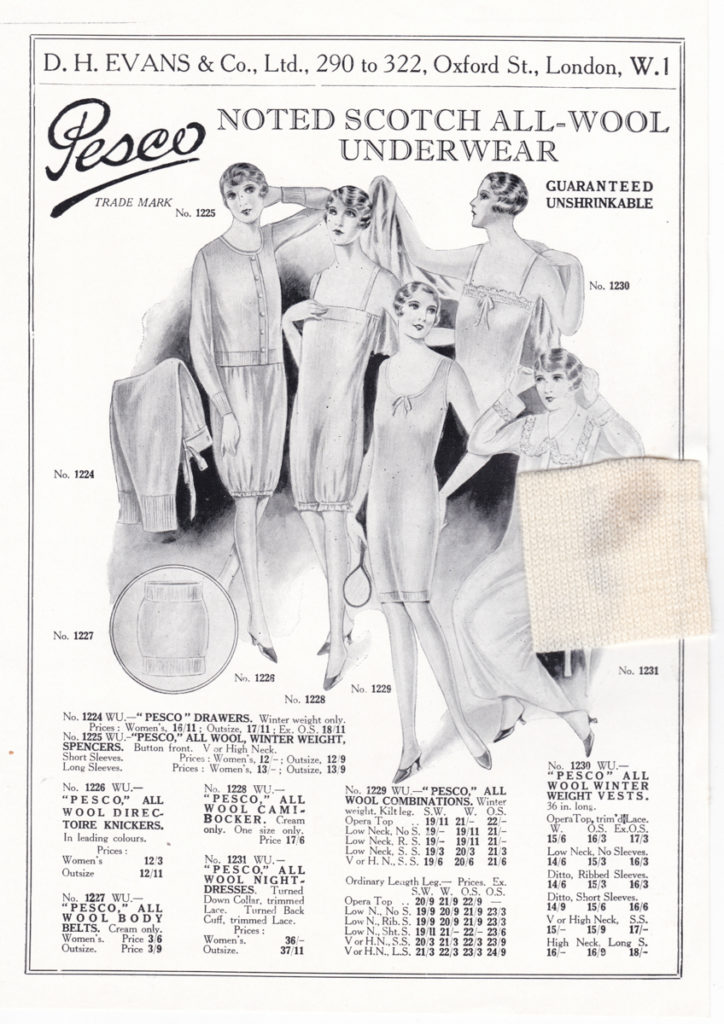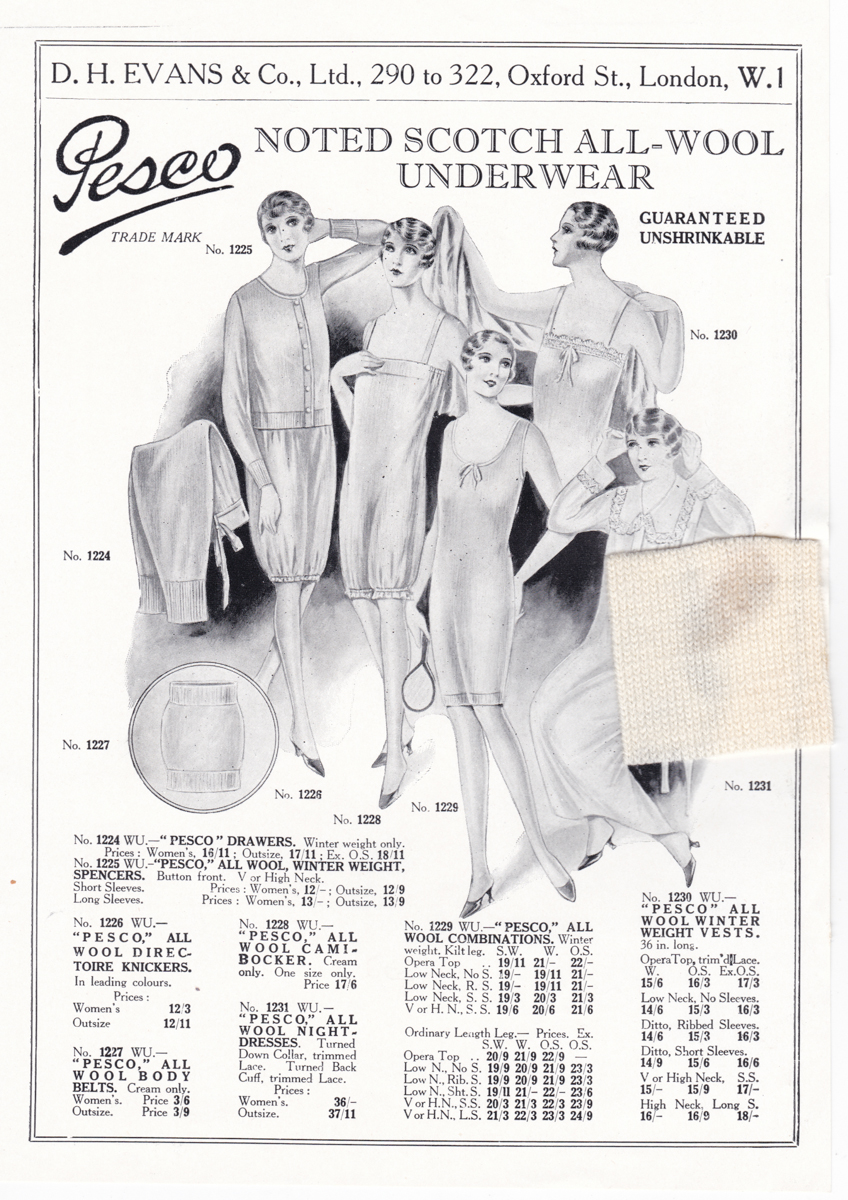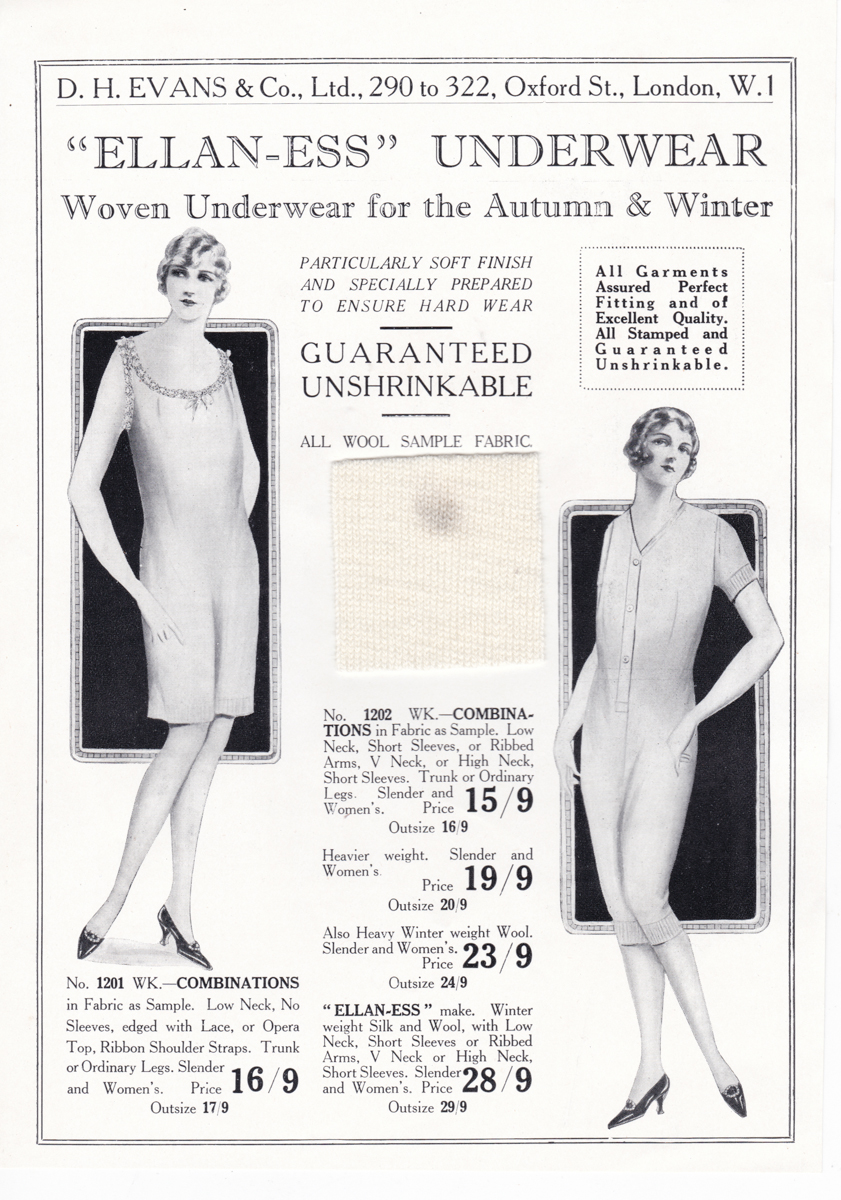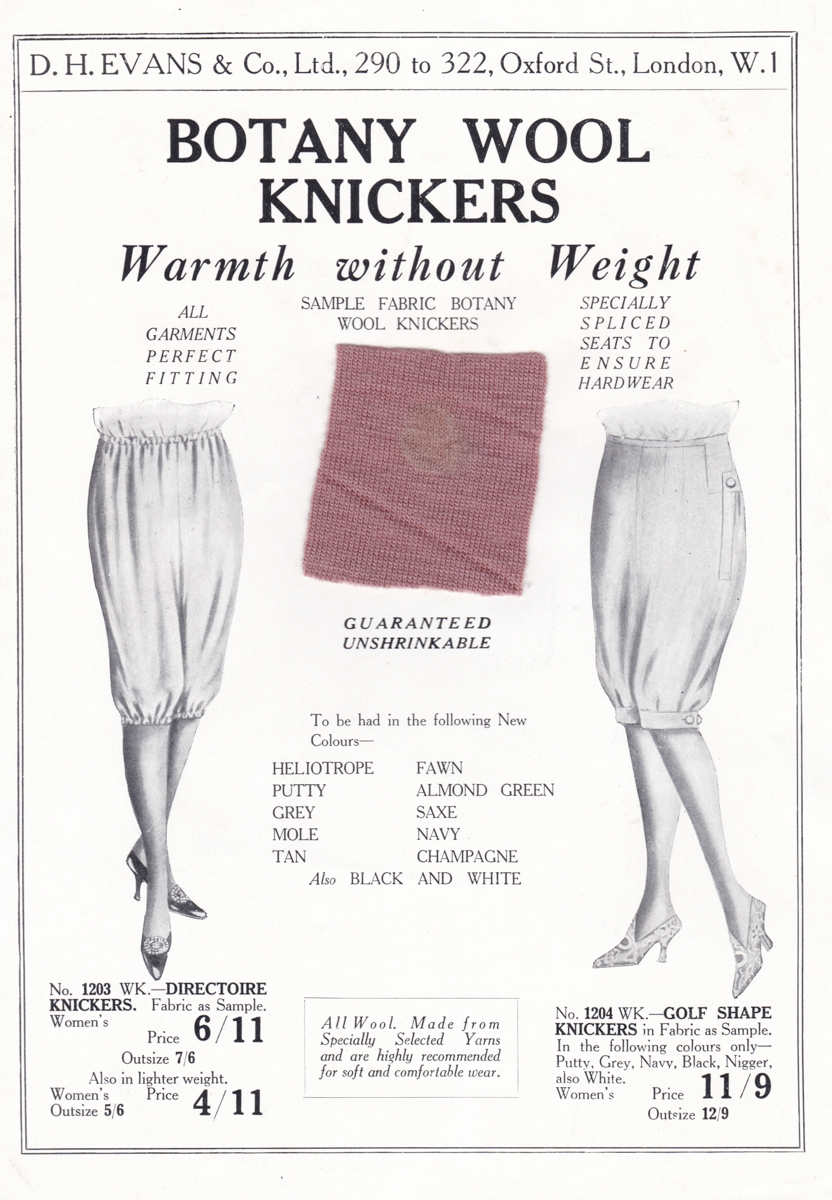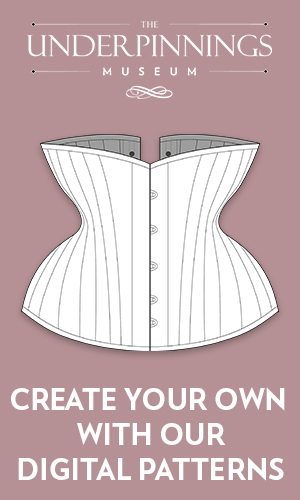Date: c. 1920s
Origin: Great Britain
Fabric: Wool
Brand: D. H. Evans & Co.
This catalogue of woollen underwear, from the 1920s, was produced by British brand D. H. Evans & Co. The undergarments, trademarked “Pesco,” are made of Scottish wool and are guaranteed not to shrink. A small swatch of a white knit wool fabric is included. The garments for sale range from “directoire” knickers, nightdresses, “cami-bockers” (a combination camisole top with knickers ), and wool slips with a variety of necklines (opera, low, high) and skirt lengths available. A second page shows “Ellan-ess” underwear, combining knickers with a short-sleeved buttoned top, or a slip-style garment with ribbon trimming at the neckline and shoulder straps. Prices are listed, with a higher price for “outsize” – presumably meaning plus-size garments, a shilling higher in cost throughout.
A third page advertising “Botany Wool Knickers” available in directoire and gold styles (gathered at the knee and with a buttoned band at the knee, respectively) includes a dusty rose pink swatch of knit wool fabric. The advertisement specifies that these knickers are also available in heliotrope, almond green, saxe, and other colours. Colours are not listed for all garments, but the golf-style knickers include a racial slur as a colour option. Although this indicates some level of diversity in skin tone colours available to buyers, it is important to note that regardless of historical context or intention, by the 1920s this racist term had long been used to harm and “impose contempt upon” the Black community. A 1930s hosiery catalogue from the Underpinnings Museum collection is another example of derogatory names for different “skin tone” colours in undergarments.
H. Evans was a London department store, known for an imposing building on Oxford street, constructed in 1937. Building height restrictions had recently been lifted, allowing for the department store to be 100 feet tall, with a hall of escalators a main architectural focal point. Undergarments were sold on the second floor of the building. The “iconic” store ceased operations in January 2022.
From the collection of Karolina Laskowska
